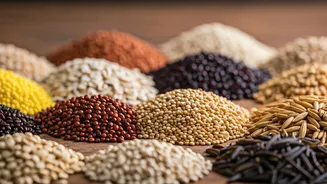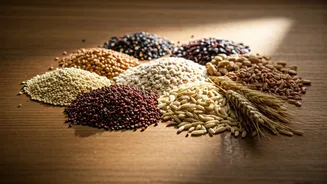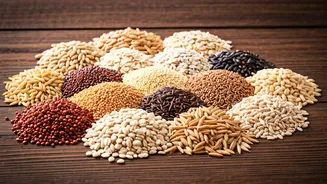Leafy Green Power
Leafy green vegetables are nutritional powerhouses and are often at the top of the list for diabetes management. Spinach, kale, and other greens are packed
with vitamins, minerals, and fiber, while being low in carbohydrates and calories. The fiber in these greens slows down the absorption of sugar into the bloodstream, which helps prevent blood sugar spikes after meals. Moreover, leafy greens contain antioxidants that can protect against cellular damage, a common concern for people with diabetes. Consider incorporating these greens into salads, smoothies, or cooked dishes to enhance your meals. For example, a simple spinach salad with a light vinaigrette can be both tasty and beneficial.
Broccoli's Benefits Examined
Broccoli is another excellent vegetable for diabetes management. It’s rich in sulforaphane, a compound that has been shown to improve insulin sensitivity and help regulate blood sugar levels. Insulin sensitivity refers to how well your cells respond to insulin, the hormone responsible for allowing glucose to enter your cells for energy. Improved insulin sensitivity is a critical factor in diabetes management. Broccoli also provides plenty of fiber and nutrients that support overall health. Whether steamed, roasted, or added to stir-fries, broccoli is a versatile vegetable that can easily fit into various meal plans. It also helps to provide a sense of fullness, which can help in weight management, another key factor in controlling diabetes.
The Tomato Advantage
Tomatoes, often mistaken for vegetables, are actually fruits, but they provide great benefits for managing diabetes. They are packed with lycopene, an antioxidant that has been linked to several health benefits, including reduced risk of heart disease, a common complication of diabetes. Tomatoes have a low glycemic index and are relatively low in carbohydrates, which means they do not cause significant blood sugar spikes. Incorporating tomatoes into your diet is simple. They can be eaten raw in salads, cooked in sauces, or added to various dishes. Their versatility makes them a great addition to any diabetes-friendly meal plan. Additionally, the fiber in tomatoes helps promote satiety, which can assist in controlling portion sizes.
Peppers and Blood Sugar
Bell peppers, especially the colorful varieties, are excellent choices for people with diabetes. They are rich in vitamins and antioxidants, and they have a low glycemic index. These factors make them a good option for managing blood sugar levels. Bell peppers do not cause sharp increases in blood sugar, as their carbohydrate content is relatively low. They can be eaten raw in salads, grilled, roasted, or used in various cooked dishes. The antioxidants in bell peppers also offer protection against oxidative stress, which can be a concern for individuals with diabetes. Regularly including bell peppers in your diet can contribute to both better blood sugar control and overall well-being. Think about stuffing them with lean protein and other vegetables for a balanced and nutritious meal.
Onions' Hidden Perks
Onions are more than just a flavor enhancer; they also offer health benefits for managing diabetes. Onions contain compounds that help to lower blood sugar levels, including quercetin, an antioxidant known for its anti-inflammatory properties. Onions are also low in carbohydrates and high in fiber, which helps regulate blood sugar by slowing down the absorption of glucose. They can be incorporated into almost any meal, from soups and stews to salads and stir-fries. Eating onions can improve insulin sensitivity and manage blood sugar levels. Consider using onions raw, cooked, or pickled to get the full benefits. They add both flavor and nutritional value to any meal, making them a fantastic addition to your diet. The versatile nature of onions makes them a dietary staple for people with diabetes.











